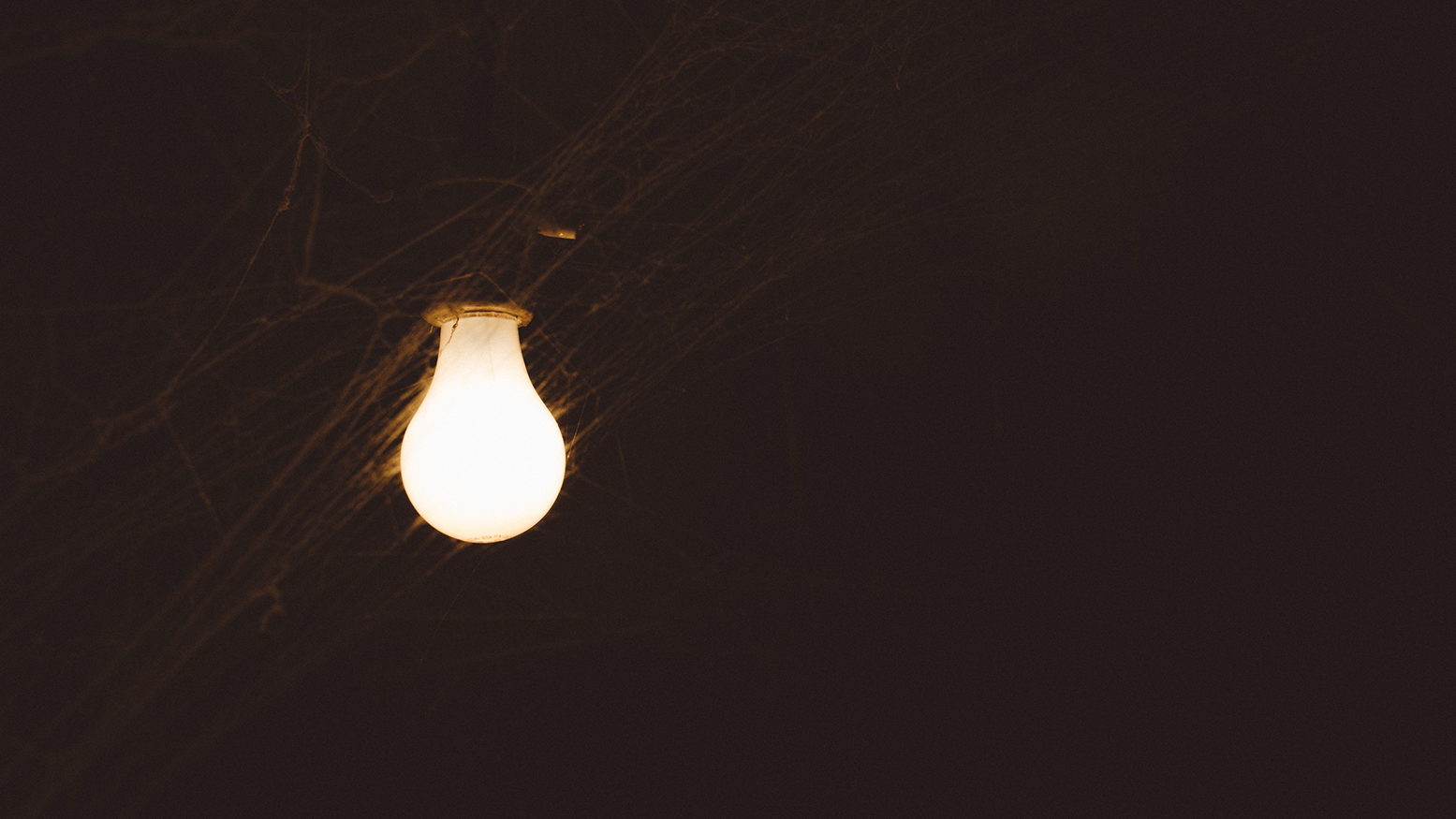I never dreamed of getting attached to a spider. Yet in the late summer of 2018, I did.
One August night I was putting out the dog as I do every evening. As the dog scampered out into the darkness to do his “business,” I noticed a portion of spiderweb connecting the ceiling to our back porch wall. In one corner of the web, a little brown, black, and orange spider furiously worked away on a barely visible knot. For some reason, I didn’t knock the web down. Watching the little spider’s graceful diligence, I thought, “God, I give you glory. Your creation is so amazing. Praise to your name.”
I was awestruck thinking that the spider’s tiny head (about the size of a pencil point) contained a brain that could conduct a site analysis of my porch, envision a web beside the light fixture, and could use its body to bring the silken mosaic to life.
The next night about 9 PM I looked to see if the spider web was there. It was— and now quite a bit bigger. I understood why the savvy spider had settled so near to the light fixture: the light was a siren call to insects. I watched as the industrious spider captured moths, mosquitoes, and other flying things the origin of which only God knows.
Weeks of observing the spider went by. The insect entrapment business treated her well. My little arachnoid squatter was growing. By and by the spider’s body got fat.
Call me crazy, but it seemed like the spider would greet the dog and I as we came out for our nightly trek. The spider would bounce up and down on her carnivorous trampoline as if acknowledging my daily moment of quiet observation. It was oddly fascinating to watch her instantaneous conquering of anything that got in (or even flew near) the web.
Occasionally I would wake up early in the morning and the web would be completely gone. I mean, like, gone without a trace. And the spider would be nowhere in sight. But by 8:00-8:30 at night the web would have been reconstructed in full glory. My contribution to each evening’s bug-catching, circle-of-life drama would be to switch on the porch light. One night when I flipped on this fluorescent “dinner bell,” the ever-growing spider ran a lap around the web as if to signal, “Open for business!”
A month of this interaction had gone on when one morning, I noticed a slight change in the air. It was that inevitable daybreak you experience sometime around the second week of September as summer begins to die. The same day about dusk, I anxiously watched for my crawling friend’s nightly return. I made multiple trips to check the porch that night, but by around 11:00 PM, I knew it was not to be. The spider’s late-summer theatrical run had come to an end. There would be no curtain call.
All that was left from thirty days of web building was a lone strand of filament that hung from the ceiling. Staring at that last length of the web made me feel like I had somehow stepped onto a scratchpad of lost notes by E.B. White. The thread swayed gently back and forth in a goodbye wave, moved by a colder-than-usual evening breeze.
Of the spiders that escape enough shoe leather to make it to maturity, I don’t know where they go to die. My little friend seemed omnipresent for about a month and then was gone. Disappeared. It projected a witness that reminded me of Psalm 19:1. The spider was extremely diligent at the mission God had assigned it. Creation does magnify the artistry of the Creator. Even tiny insects do what they’re put here to do. Perhaps one day, man will learn to do the same.
Alex McFarland does more than stare at insects all day. He leads the Center for Apologetics and Christian Worldview, North Greenville University, SC. www.alexmcfarland.com






